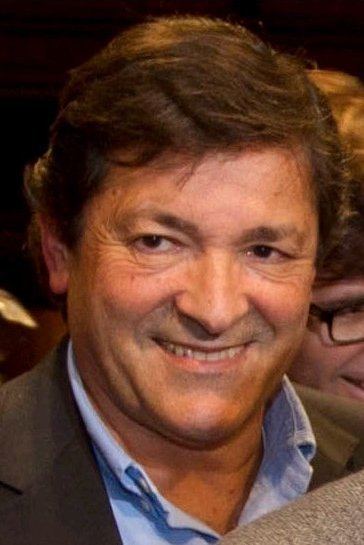24 May 2015 → Next 14 February 2012 1 April 2015 10 seats, 21.5% Did not contest | 23 October 2010 14 February 2012 17 seats, 32.1% 10 seats, 21.5% 14 11 | |
 | ||
The 2015 Asturian parliamentary election was held on Sunday, 24 May 2015, to elect the 10th General Junta of the Principality of Asturias, the regional legislature of the Spanish autonomous community of the Principality of Asturias. All 45 seats in the General Junta were up for election. The election was held simultaneously with regional elections in 12 other autonomous communities and local elections all throughout Spain.
Contents
Final results showed the Asturian Socialist Federation (FSA–PSOE) with 26.5% of the vote (14 seats), the People's Party (PP) in second with 21.6% (11 seats) and newly created Podemos (Spanish for "We can") in a close third with 19.1% (9 seats). The Asturias Forum (FAC), which had ruled the community in the 2011–12 period, saw a dramatic loss of support, falling to fifth place with 8.2% and 3 seats, overcame by a stagnant United Left (IU–IX) and in a draw with up-and-coming Citizens (C's).
Socialist leader Javier Fernández was able to retain the regional government thanks to the support of United Left, after PP and FAC joined their votes against the PSOE and with Podemos supporting its own candidate.
Electoral system
The 45 members of the General Junta of the Principality of Asturias are elected in 3 multi-member districts using the D'Hondt method and a closed-list proportional representation system. Unlike other regions, districts do not coincide with provincial limits, being determined by law as such:
Each district is entitled to an initial minimum of 2 seats, with the remaining 39 seats allocated among the three districts in proportion to their populations. For the 2015 election, seats are distributed as follows: Central District (34), Eastern District (5) and Western District (6).
Voting is on the basis of universal suffrage in a secret ballot. Only lists polling above 3% of the total vote in each district (which include blank ballots—for none of the above) are entitled to enter the seat distribution.
Background
Following the 2012 election, regional PSOE leader Javier Fernández was able to be elected as President of Asturias thanks to a confidence and supply agreement with both IU-IX and UPyD. However, in November 2013 both parties announced they were withdrawing support from the government after the PSOE voted down a proposal to reform the autonomous community's electoral law (including, among other things, a removal of the three district-division of the Principality), leaving the regional government in minority. In order to prevent a parliamentary deadlock, however, the PSOE unexpectedly reached an agreement with the PP in order to obtain its parliamentary support to avoid political instability, in what was dubbed by opponents as the duerno agreement.
Incumbent Socialist Javier Fernández announced his intention to run for re-election to a second term in office, being chosen as his party's candidate without opposition. Opposition leader Francisco Álvarez-Cascos announced on 12 February 2015 that he would not stand again as Asturias Forum's candidate, with Cristina Coto being elected as the party's candidate and leader the following month. Mercedes Fernández was elected as People's Party candidate for a second consecutive time, while Gaspar Llamazares was proclaimed as the candidate for United Left after a primary election held on 24 January 2015.
Finally, Ignacio Prendes, the only deputy of Union, Progress and Democracy, was expelled from the party and will contest as the candidate of Citizens (C's). Adán Fernández will substitute him as the candidate of the party.
The election will be influenced by the surge of two rising parties in opinion polls: Podemos (Spanish for We can), a left-wing party created in January 2014 to contest the 2014 European Parliament election and whose success brough it to establish itself as a fully-fledged party at the national level, and centrist Citizens (C's), whose rise in opinion polls early in 2015 and its success in the 2015 Andalusian election has brought it at the center of media attention. Emilio León will stand as Podemos' candidate after being elected in a primary election process held during the last weeks of March, Citizens will also run in the election, despite an early controversy resulted in the resignation of the former party's candidate Francisco Gambarte and the party staff considering whether to stand or not in the region. Nicanor García will be the candidate, while Ignacio Prendes, expelled from UPyD, will be the second person in the list.
On April 21, it was confirmed that 19 parties will take part in the election.
Party vote
Poll results are listed in the tables below in reverse chronological order, showing the most recent first, and using the date the survey's fieldwork was done, as opposed to the date of publication. If such date is unknown, the date of publication is given instead. The highest percentage figure in each polling survey is displayed in bold, and the background shaded in the leading party's colour. In the instance that there is a tie, then no figure is shaded. The lead column on the right shows the percentage-point difference between the two parties with the highest figures. When a specific poll does not show a data figure for a party, the party's cell corresponding to that poll is shown empty.
Seat projections
Opinion polls showing seat projections are displayed in the table below. The highest seat figures in each polling survey have their background shaded in the leading party's colour. In the instance that there is a tie, then no figure is shaded. 23 seats were required for an absolute majority in the General Junta of the Principality of Asturias.
Exit poll
